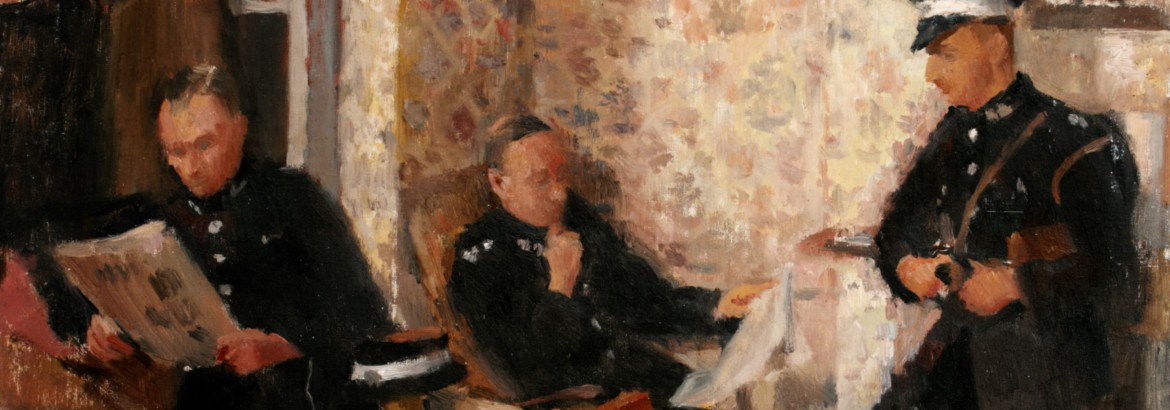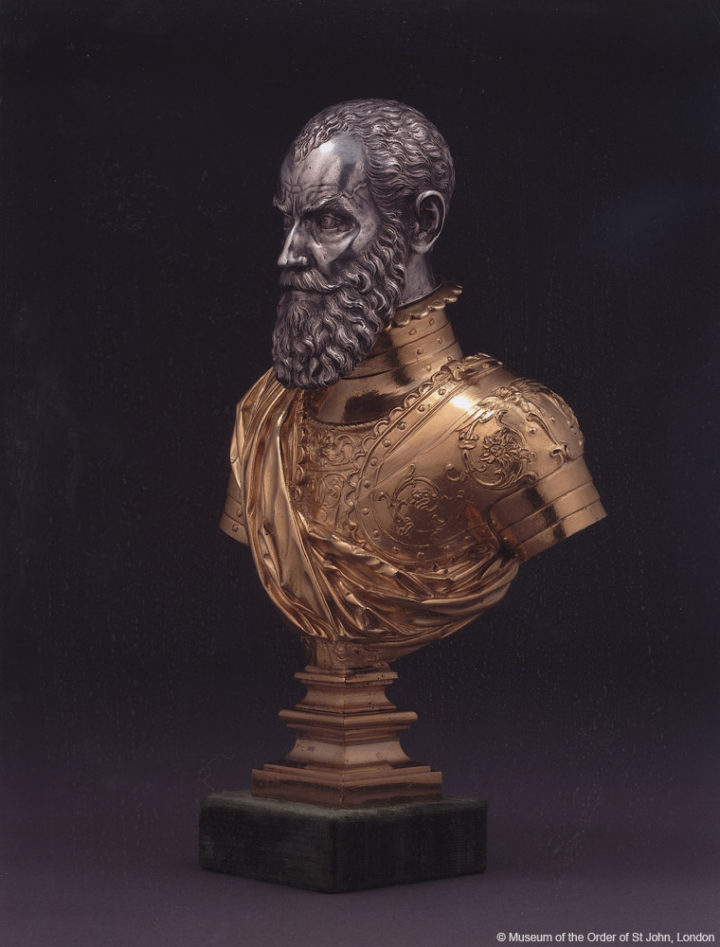Jean Parisot de Valette was the 49th Grand Master of the Order of St John and founder of the city of Valletta, the capital of Malta.
There are two parts to this sculpture. The silver head was cast and then fine detail was carefully added. Made of gilded bronze, the bust section of the sculpture depicts Valette as a hero in a mid-16th century style. He has a commander’s sash across his chest and ornate armour, unlike the much simpler examples of his armour that survive to this day at the Palace Armoury in Valletta.
Like all knights in the Order of St John at this time, Valette was of noble blood, born into the Valette family which hailed from South-Western France. Aged twenty in around 1514, Valette joined the Order of St John who at this time were based on the island of Rhodes. He was a member of the Langue of Provence. The Order’s control over the island was under threat at this time and sieges were common. In 1480, the Ottomans had attempted to capture the island, as the presence of a Crusader state in such close proximity to their territory was seen as a major obstacle to expansion. The efforts had failed and the Knights of St John built many fortifications to protect the island in the following years. Despite this, in 1522, the Ottomans, led personally by Suleiman the Magnificent, made another attempt to capture Rhodes with an army of 100,000 men. For almost six months between July and December 1522, Rhodes was besieged. Young Valette took part in this conflict. The Knights lost and were expelled from Rhodes.
Valette accompanied Grand Master Philippe Villiers de L’Isle-Adam to the Island of Malta which was granted to the Order by Emperor Charles V in 1530. Prior to rising to the rank of Grand Master in 1557, Valette lived a colourful life. At one point, he was sent to a prison on the island of Gozo for four months after fighting with a fellow knight. In 1537 Valette was made Commander and Governor of Tripoli, a territory that had been given to the Knights along with Malta by Charles V. In 1541, he was captured whilst serving on the San Giovanni galley. He subsequently spent a year as a slave on the galleys of Barbary pirates, before being freed in an exchange of prisoners.
In 1557, Valette was elected Grand Master of the Order of St John upon the death of Claude de la Sengle. He is best known for organising the defence of Malta during the Great Siege of Malta in 1565. Outnumbered by the large Ottoman force, the Order held out for over three months until the Turkish forces headed back to Constantinople.
The victory brought Valette a great deal of prestige across Europe and he received many gifts to commend his brave leadership. This bust is an example of such a gift. The maker of the bust has been a matter up for debate over the intervening centuries. In 1860, the bust was sold as the work of sculptor Alessandro Vittoria. However, it is not known whether he made busts of this size. Dr Alan Borg proposed that the bust was made by Leone Leoni who worked in Milan and took many commissions for the Habsburg emperors. More recently, Dr Jeremy Warren has proposed that the bust was made by Giovanni Bandini who was based in Florence and is recorded as having taken commissions as a goldsmith.
Following the siege, Valette commissioned the construction of Valletta, the present capital of Malta. He laid the first stone of the city but did not live to see it completed as he died in August 1568. His tomb is located in the Crypt of St John’s Co-Cathedral.
Warren, Jeremy, ‘A Grand Master in miniature: Giovanni Bandini’s bust of Jean de Valette’, The Burlington Magazine, CLX (March 2018).



